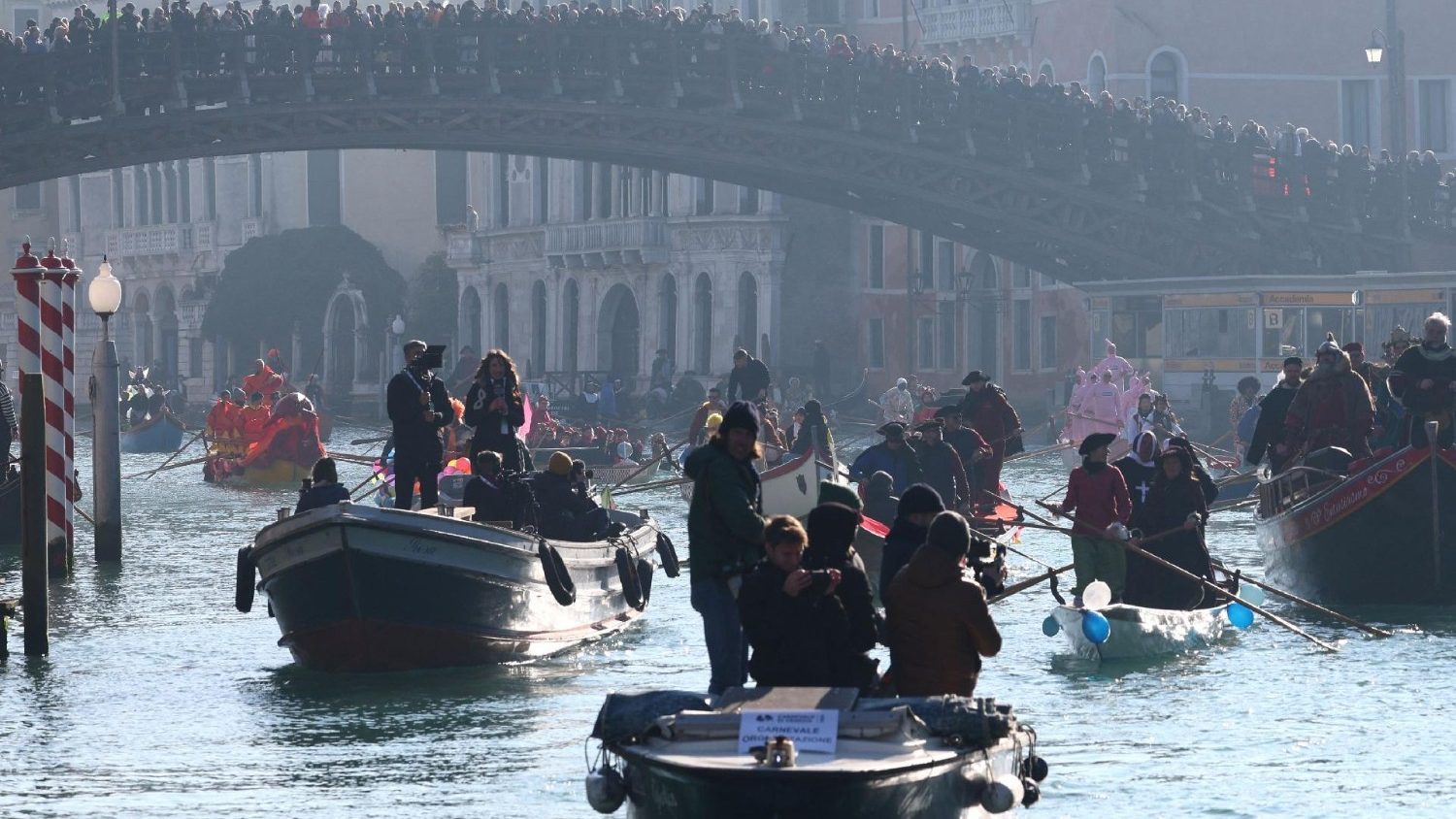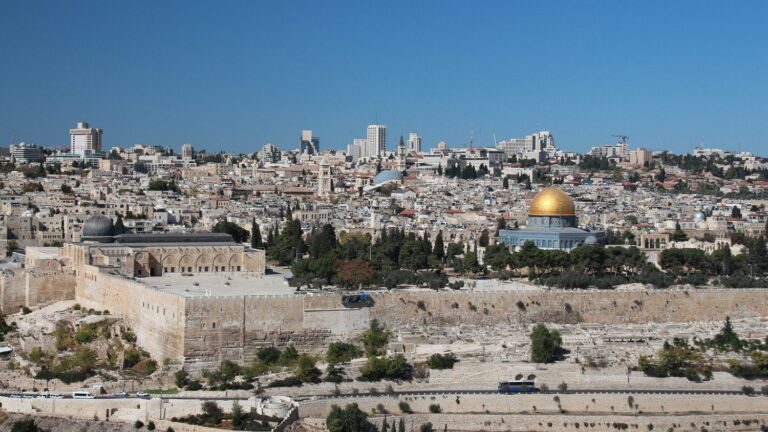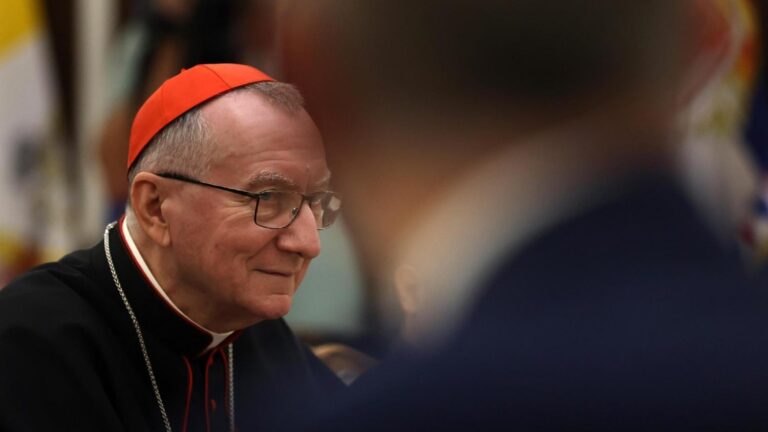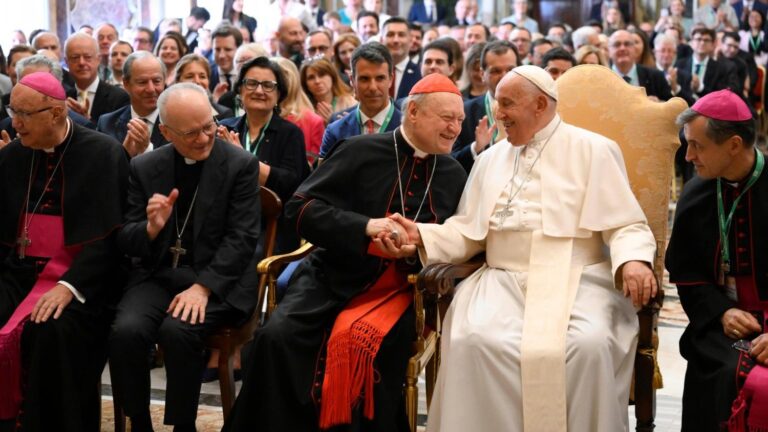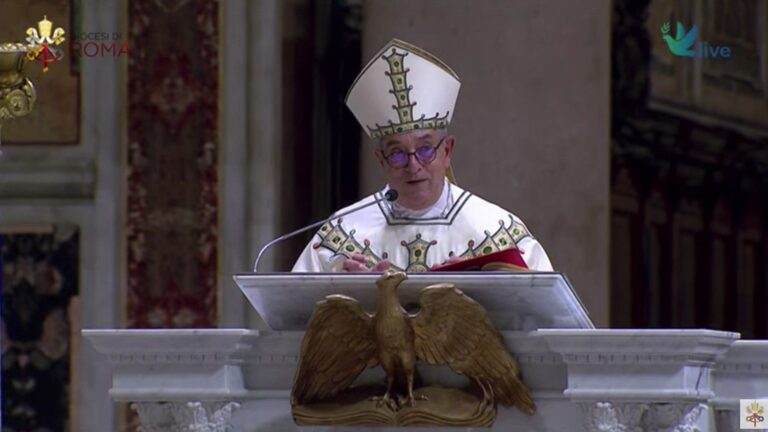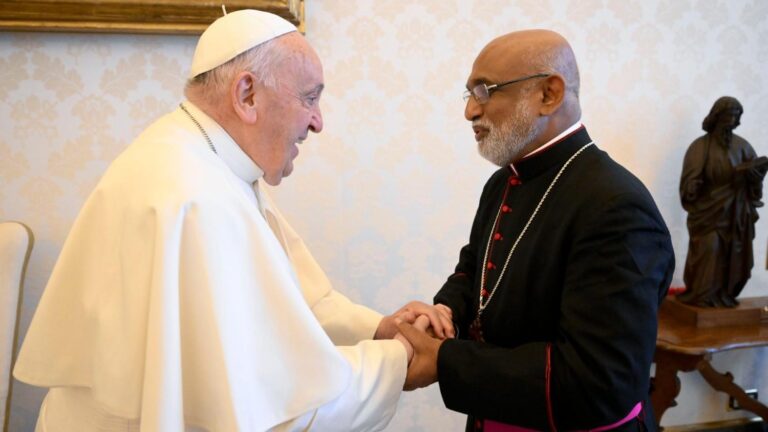Holy See Pavilion at Venice Art Biennale seeks to ‘turn our eyes back to reality’
The Vatican is showcasing the Holy See Pavilion at the 60th Venice Art Biennale, which will host Pope Francis, highlighting how inmates are committed to transforming their lives and embracing universal values through art.
Deborah Castellano Lubov
The Holy See Pavilion of the 60th International Art Exhibition – Venice Biennale – which will be exhibited in the Giudecca women's prison – will illustrate the capacity of inmates to embrace art to transform their lives.
This was the message conveyed Monday during the press conference held at the Holy See Press Office regarding the Pavilion, which will take place in the northern Italian city from April 20 to November 24, 2024.
The project is unprecedented for the Venice Biennale, thanks to its physical and conceptual installation inside the Giudecca women's prison, which will host the Pavilion.
The presenters of the press conference were Cardinal José Tolentino de Mendonça, prefect of the Dicastery of Culture and Education; Giovanni Russohead of the Department of Prison Administration of the Ministry of Justice of the Italian Republic; Dr Chiara Parisicurator of the Pavilion of the Holy See; Dr Bruno Racine, curator of the Pavilion of the Holy See; And, Dr. Paolo Maria Vittorio Grandi, Director of Governance Intesa Sanpaolo, an Italian bank.
'With my own eyes'
Titled “With My Own Eyes,” the Pavilion is dedicated to the theme of human rights and people living on the margins of society, and seeks to draw the world's attention to these largely ignored people while fostering a culture of the encounter.
The Pavilion of the Holy See invites the viewer to take literally the words of Pope Francis, who invites everyone to look others directly in the eyes, beyond their social status to encounter their humanity.
“Contemporary culture prefers to metaphorize sight,” said Cardinal Mendonça. “But seeing with one's own eyes gives vision a unique status, because it involves us directly in reality and makes us not spectators but witnesses.”
The 2024 Venice Art Biennale is titled “Foreigners Everywhere” and will be open from April 20 to November 24.
Visit of Pope Francis to the Pavilion in April
Pope Francis will make a one-day pastoral visit to Venice, where he will stop at the exhibition, making him the first pope in history to attend the Venice Biennale.
The Holy Father will take a moment to appreciate the Exhibition Pavilion in the Prison and will spend time with members of the Venice ecclesial community.
The full program of the Pope's visit, Cardinal José Tolentino de Mendonça told the journalists present, will be made public soon.
Press conference releases details
During the conference, Cardinal Mendonça declared: “It is with great joy that we welcomed the news of Pope Francis' visit to the Pavilion.”
“It will be a historic moment”, underlined the Cardinal Prefect, “because he will be the first Pope to visit the Venice Biennale, which clearly demonstrates the desire of the Church to consolidate a fruitful and close dialogue with the world of arts and culture.
The Cardinal stressed that it is no coincidence that the Holy See chose to present its pavilion at the Venice Biennale in a seemingly unexpected place, such as the Women's Prison on the island of Giudecca.
He added that it is also no “coincidence that the title of the pavilion, 'With My Own Eyes,' aims to draw our attention to the importance of how we responsibly conceive, express and construct our social, cultural and spiritual coexistence. “
Gospel according to Matthew
Recovering the ability to look at reality as a starting point for rethinking it, he emphasized, is what Pope Francis emphasized during his meeting with the artists in June 2023 in the Sistine Chapel, when he urged artists to “have the ability to dream of new versions of the world.”
The year in which the Art Biennale celebrates its 60th anniversary, also underlined the Prefect, also marks the 60th anniversary of the first screening of Pier Paolo Pasolini's film “The Gospel According to Matthew”, screened for the first time in Venice . In this context, the cardinal recalled that chapter 25 of the Gospel of Saint Matthew, which begins with: “For I was hungry and you gave me to eat…”, remains “one of the texts most commented on by Pope Francis” throughout its history. his pontificate.
Before concluding his speech, Cardinal Mendonça expressed his gratitude to the Italian authorities, to the Ministry of Justice represented by the Head of the Department of National Penitentiary Administration, to the curators, all collaborating in the creation of the pavilion, to the Patriarchate and to the Patriarch of Venice. , and the main partner of the Dicastery, Bank Intesa Sanpaolo.
Art to rebuild lives
Giovanni Russo, president of the Department of Prison Administration of the Italian Ministry of Justice, welcomed the occasion, emphasizing that artistic work and commitment help prisoners rebuild their lives.
“Calling our inmates to participate with their hands puts them in contact with universal values, such as solidarity, and helps them to have self-confidence.”
“They were called,” Mr. Russo observed, to be “protagonists,” in a way “that linked them to universal values” and “with great spiritual and practical value.”
Former convent to help women in difficulty
Furthermore, Dr. Racine, one of the curators of the Pavilion, spoke about the Pavilion itself and recalled that the women's prison was previously a convent which had helped women regain their dignity thanks to the help of the 'Church.
“It’s a historic place, with a very beautiful history,” he underlined.
The Pavilion's other curator, Dr. Parisi, also discussed his work to include spontaneous contributions from inmates, illustrating how their involvement greatly enriches the place.
Finally, Dr. Paolo Maria Vittorio Grandi, Director of Governance of Intesa Sanpaolo, spoke about the bank's great dedication to art, explaining various initiatives in which it promotes this culture.
“It’s not about philanthropy, but rather part of what it means to be part of the Intesa Sanpaolo group.”
